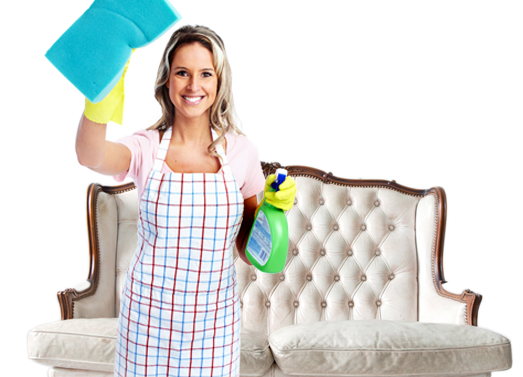Prioritizing Air Quality for Healthier Homes and Businesses
Posted on 25/06/2025
Ensuring clean, healthy air indoors is essential for both personal well-being and business success. With most people spending nearly 90% of their time inside, indoor air quality (IAQ) takes on paramount importance. Unfortunately, many modern homes and businesses face hidden air pollutants that can compromise comfort, productivity, and health.
Why Air Quality Should Be a Top Priority
High-quality indoor air isn't just a luxury--it's foundational to good health. The World Health Organization associates poor air quality with serious health problems, from allergies to chronic respiratory diseases. For businesses, suboptimal air can affect employee performance and increase sick days. *Prioritizing air quality* in homes and commercial spaces is a strategic move for any homeowner or business leader.
- Protects against airborne diseases
- Boosts cognitive performance
- Enhances overall comfort and wellbeing
- Improves sleep quality
- Reduces maintenance costs and energy bills
The Hidden Dangers of Poor Indoor Air Quality
While outdoor air pollution garners headlines, indoor air pollution often flies under the radar. Hidden threats like volatile organic compounds (VOCs), mold spores, pet dander, pollen, and even excess carbon dioxide can accumulate inside, especially in poorly ventilated spaces. These contaminants can trigger a host of symptoms and health conditions:
- Respiratory irritation and asthma attacks
- Frequent headaches and fatigue
- Allergies and skin irritations
- Difficulty concentrating
- Long-term diseases (e.g., chronic bronchitis, heart issues)
Children, the elderly, and individuals with pre-existing health concerns are especially vulnerable to poor IAQ, making air quality management critical in both residential and commercial settings.
How Air Quality Affects Workplace Productivity
The quality of indoor air has a direct impact on employee health, comfort, and productivity. Studies show that clean air can:
- Increase concentration, decision-making speed, and efficiency
- Reduce absenteeism due to illness
- Lower stress and create a more positive environment
Thus, for businesses, *prioritizing air quality* is not just about compliance--it's a smart investment in people and profitability.

Key Factors Affecting Indoor Air Quality
To effectively enhance indoor air, understanding what impacts it is vital. The biggest contributors include:
- Poor Ventilation: Without consistent exchange of stale and fresh air, pollutants accumulate rapidly. Over-insulated buildings can make this problem worse.
- Moisture and Humidity: Excess moisture fosters mold and bacterial growth.
- Household and Office Products: Cleaning supplies, paints, furnishings, and even printers can emit VOCs.
- Outdoor Contaminants: Pollen, dust, and smog infiltrate through doors, windows, and HVAC systems.
- Lack of Regular Maintenance: Dirty HVAC filters and ducts recirculate pollutants.
Identifying Poor Air Quality in Homes and Businesses
Sometimes the clues are obvious, like persistent odors, visible mold, or high humidity. Other times, indoor air pollution is invisible. Watch for these indicators:
- Recurring health complaints among occupants
- Increased dust accumulation
- Condensation on windows or walls
- Stale, stuffy air that doesn't improve with cleaning
If these signs appear, consider a professional air quality assessment to pinpoint problems and solutions.
Effective Strategies for Improving Air Quality
1. Increase Natural Ventilation
Open windows and doors whenever possible to allow fresh air circulation. Use fans or ventilators to drive out pollutants. In businesses, installing energy recovery ventilators (ERVs) can maintain comfort and fresh air without excessive energy loss.
2. Upgrade and Maintain HVAC Systems
Regularly replace air filters, clean ducts, and inspect HVAC units. Consider HEPA or activated carbon filters, which capture finer particles and neutralize odors. For advanced protection, ultraviolet (UV) systems within HVAC units can kill bacteria and viruses.
3. Manage Humidity Levels
Keep indoor humidity between 30-50%. Dehumidifiers in damp climates and humidifiers in dry environments help maintain this balance, preventing both mold and dust particle accumulation.
4. Minimize Chemical Pollutants
- Choose non-toxic, low-VOC paints and cleaners
- Store chemicals in sealed containers and away from living or work spaces
- Limit use of artificial fragrances and air fresheners
5. Add Indoor Plants for Natural Purification
Certain indoor plants--like spider plants, peace lilies, and snake plants--can absorb toxins and increase oxygen, acting as natural air purifiers. However, avoid overwatering, which can add humidity or foster mold in soil.
6. Implement Strict No-Smoking Policies
Tobacco smoke contains thousands of chemical pollutants and dramatically lowers indoor air quality. For healthier homes and businesses, designate smoking areas well outside any buildings.
7. Regular Deep Cleaning
- Vacuum carpets and upholstery with HEPA-filtered vacuums
- Wash linens and curtains frequently
- Wipe down surfaces to remove dust and allergens
- Have HVAC systems cleaned professionally every few years
Emerging Air Purification Technologies
Cutting-edge solutions are making it easier to maintain optimal air quality indoors:
- Smart air purifiers: Automatically monitor and clean the air, reporting quality in real time
- UV-C germicidal lamps: Destroy harmful microorganisms on contact
- Negative ion generators: Remove fine dust and pollen from the air, but must be used with caution to avoid ozone production
The Business Case for Investing in Good Air Quality
For businesses, improved IAQ is about more than health--it's also about economics. Here's how quality air supports corporate objectives:
- Enhanced Productivity: Fewer sick days and more energized staff
- Customer Satisfaction: Visitors perceive cleaner, fresher air and enjoy a better experience
- Reputation Management: Demonstrating a commitment to employee and customer wellbeing
- Regulatory Compliance: Meeting legal standards and industry certifications
Additionally, *prioritizing air quality* can contribute towards sustainability goals, especially when integrated alongside energy-efficient systems and green building certifications such as LEED or WELL.
Regulatory and Industry Standards
Government agencies and organizations like OSHA, EPA, and ASHRAE set benchmarks for indoor air. For businesses, aligning with these standards is crucial for risk management and demonstrating due diligence:
- OSHA: Ensures healthy working conditions by addressing indoor contaminants
- EPA: Offers guidance on residential and commercial air quality improvement
- LEED & WELL: Certify buildings that meet high air quality and environmental health standards
Regularly review local and national regulations to safeguard against legal liabilities and workplace hazards.
Steps to Assess and Maintain Indoor Air Quality
Regardless of setting, these steps help ensure consistent, high-quality air indoors:
- Monitor Indoor Air Quality: Use sensors and smart devices to track pollutants, CO2 levels, and humidity in real time
- Schedule Regular Professional Assessments: Specialist testing can identify hidden sources of contamination
- Educate Occupants: Promote behaviors that reduce pollution, from regular cleaning to minimizing chemical use
- Keep Systems Maintained: Regularly service HVAC, change filters, and address water leaks immediately
- Review and Update Policies: Ensure workplace or household rules reflect best IAQ practices
How to Choose the Right Air Quality Solutions
Every home and business is unique, so selecting the right combination of solutions is key:
- Assess the primary sources of pollutants in your environment
- Factor in building size, occupant number, and local climate
- Determine your maintenance capacity--some systems require more frequent care
For businesses, consult with certified IAQ specialists or mechanical engineers. Homeowners can often start with over-the-counter air monitors and purifiers, scaling up as needed.
The Role of Green Building Design
Modern construction and remodeling projects increasingly focus on indoor environmental quality--including air. Energy-efficient windows, strategic ventilation, integrated air purifiers, and low-emission building materials all contribute to safer, more comfortable spaces. Green certification programs support this mission, providing frameworks and benchmarks for healthy building design.

Building a Culture of Clean Air
Prioritizing air quality is not a one-time fix--it's a continuous improvement process. This means:
- Designating clear air quality responsibilities among staff or family members
- Establishing maintenance schedules and tracking performance
- Continuously educating and updating all occupants about best practices
- Keeping track of regulatory changes and new technologies
Designing for clean air is designing for healthy, happy living and working.
Conclusion: Clean Air, Healthy Future
Elevating indoor air quality should be top-of-mind for everyone--homeowners, business leaders, property managers, and employees alike. The benefits span health, productivity, comfort, and cost savings. By understanding sources of indoor air pollution, implementing strategies for improvement, and fostering a culture of awareness, you can ensure that your home or business is a haven for well-being and success.
Prioritize air quality today--because healthier air means a healthier future for your loved ones, your team, and your entire community.




